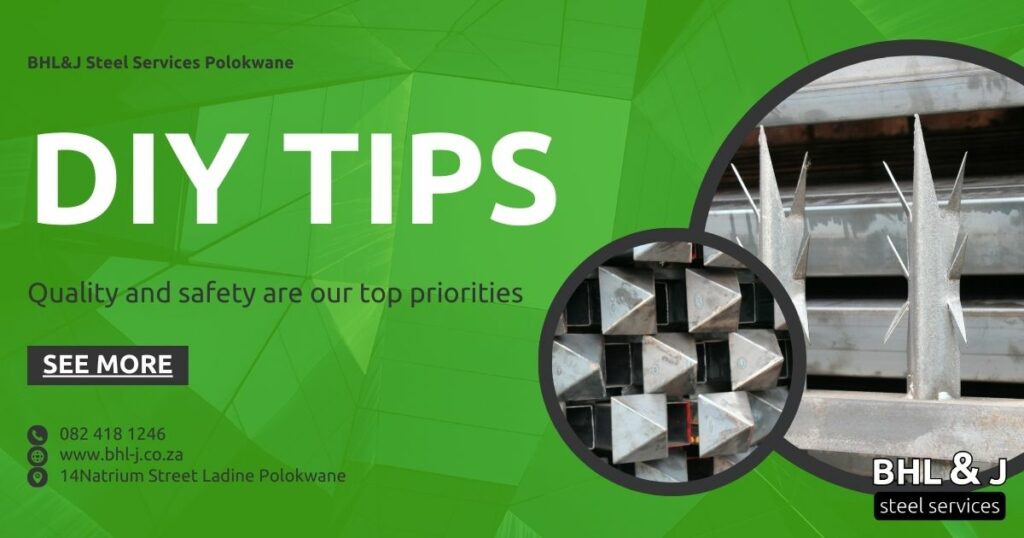
DIY Tips
Your Easy Fencing DIY Guide
- Measure the distance you would like to enclose and determine the height you would prefer your fence to be.
- Decide where any gates must go and the length and type of gate required.
- Bring these measurements to us at the Polokwane branch where one of our counter-salesmen will assist you. You will need 2 capped posts for your first panel and 1 post for every panel thereafter.
- Panels are made to a maximum width of 3,0m and any height between 300mm and 3 000mm.
- Post lengths will differ according to your needs. Ideally you need 600mm in the ground plus the height of your palisade fence. For example: for a 1,8m high fence you must add 600mm making the ideal post height 2,4m.
- The holes must be dug 600mm deep and 350mm x 350mm wide and centre to centre of the holes will be determined by the length of the panels you will be installing. For a 3.0m wide panel, from centre to centre of the holes will be 3.076m, a 2.0m panel will be 2.076m and so forth.
- Each hole will require 1 bag of ready mix concrete.
- Using a fish line to ensure that you get a straight line and a measuring tape to determine the distance between the holes, plant the posts in the holes. Use a spirit level to make sure your posts are straight and upright. Let the concrete cure for at least 24 hours.
- Place panels between the planted posts, determine the ground clearance you desire and weld in to place.
- Your palisade fence now needs to be cleaned with thinners and then painted with red oxide primer and finally with a good quality enamel paint.


